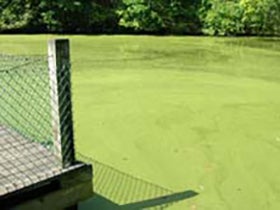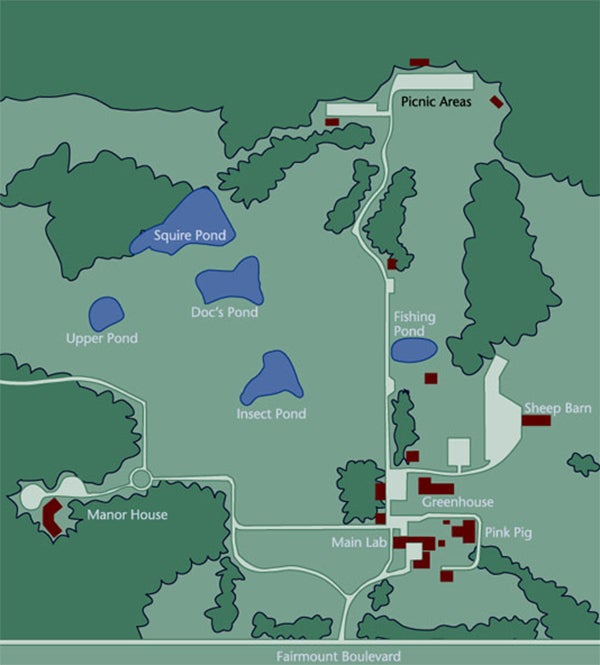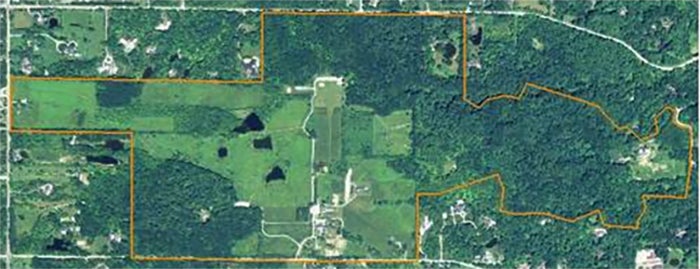Since 1958, there has been four research ponds at the farm: Insect pond, Squire pond, Doc's pond, and Upper pond. These ponds drain to a ravine and into the Chagrin River. They were designed by Dr. Charles Davis for research purposes.
The research ponds have been used for extensive studies in the area of energy and nutrients flow, as well as research of fish behavior and planktonic distribution. The ponds contain a large population of blue gill and large mouth bass.
The research ponds are located on the west side of the road leading to the picnic areas. Insect pond is located to the south and is visible from the road leading to the Manor House. It has been the subject of ecological research by Dr. Mitsuo Teraguchi with the JCE. The JCE study involved stocking a viable food source (glass shrimp) in order to improve the efficiency of the food web in the pond.
Doc's pond is located on the south side of the running trail. This pond has historically had the largest fish population and has been extensively studied by students in aquatic biology. It has high productivity levels and usually undergoes massive algae blooms in August.
The other two ponds, Squire and Upper, contain a large blue gill population and lower bass population. Several studies on the nesting behavior of blue gills have taken place in both ponds. They have a high insect diversity. Squire pond is the deepest and less productive of the ponds. Upper pond is the smallest pond but it is very productive and contains emergent and submergent vegetation.
Since Summer 2013, two unique research ponds are available to study fish and frog populations at the new property of Cedar road acquired by the university, thanks to the generosity of an anonymous donor. The largest 1-acre pond has a low conductivity ideal for comparative studies and the small pond in located in shaded area to allow for introduction of salamanders species.




